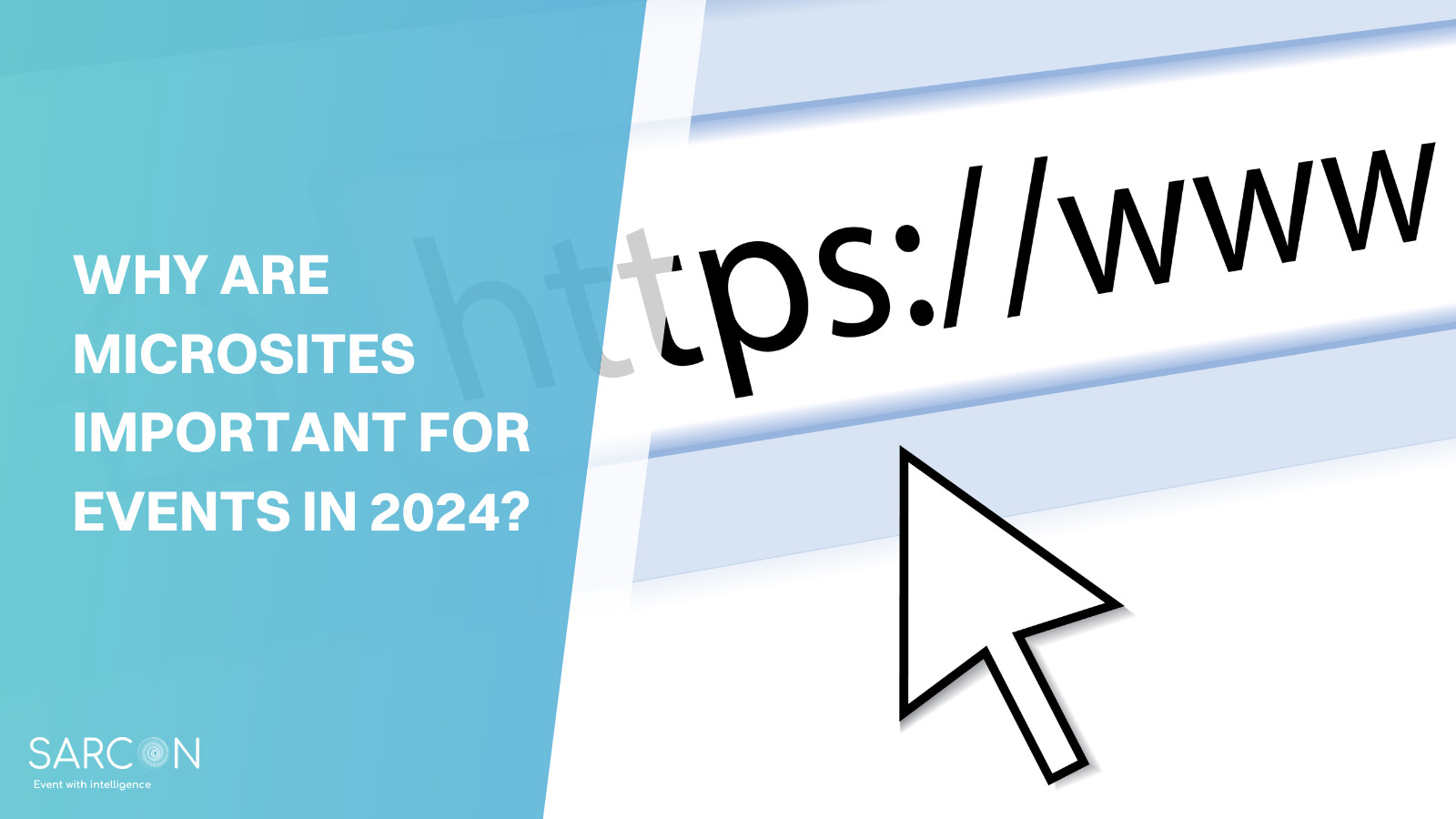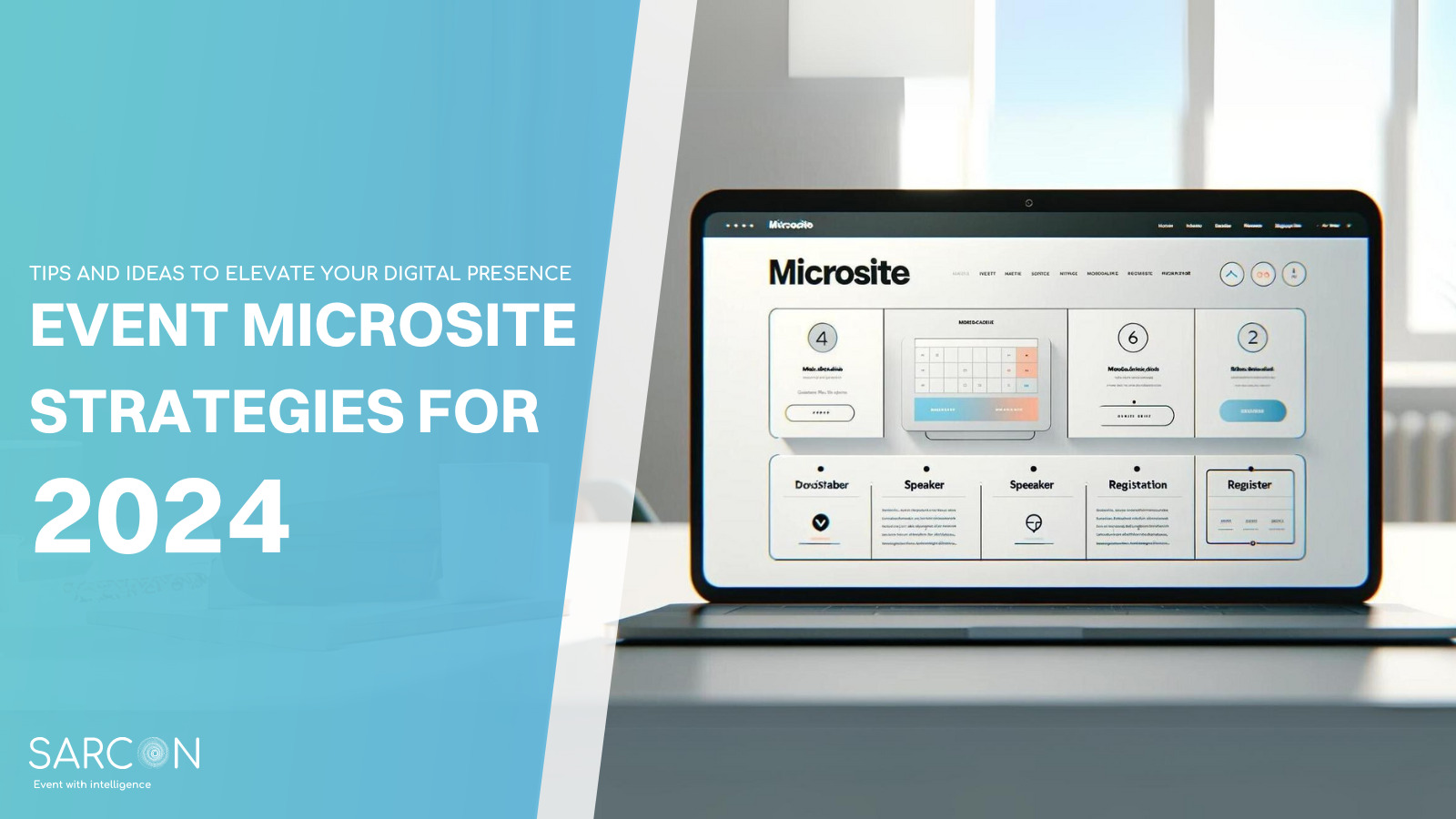Microsites have become an integral component in the world of event marketing and management, especially in 2024. These compact, tailored websites offer a range of benefits for both event organizers and attendees. In this comprehensive article, we will delve deep into the world of microsites and explore why they are important for events. From their benefits and best practices to frequently asked questions, we’ve got you covered.
What is a Microsite?
Before diving into the significance of microsites for events in 2024, it’s essential to understand what a microsite is. A microsite is a branded, focused content site that lives outside of an organization’s main website and exists for a specific purpose. Typically, a microsite has its own domain name or subdomain and is designed to function as a discrete entity while still being part of the larger brand. They are often used for marketing campaigns, special promotions, or events and are characterized by their limited scope and targeted focus.
Why are Microsites Important for Events in 2024?
Microsites for events are not just an accessory; they are a strategic tool that can transform the way events are managed, promoted, and experienced. By creating a dedicated web space, microsites offer a range of benefits that extend beyond the confines of traditional websites. Let’s delve into a more detailed exploration of these benefits, offering practical insights into each aspect and understand why they are indispensable in 2024:
1. Enhancing Event Visibility
Microsites provide a dedicated online platform for your event, allowing you to showcase it in all its glory. By optimizing the microsite with relevant keywords, you can improve its search engine ranking, making it more discoverable to potential attendees. This enhanced visibility helps in attracting a larger and more targeted audience.
Imagine you are organizing a technology conference. With a microsite optimized for keywords like “TechCon 2024,” potential attendees searching for tech-related events are more likely to stumble upon your event, increasing your chances of registration.
2. Crafting a Unique Brand Identity
Microsites provide a dedicated online space that is specifically tailored for an event. This allows for a concentrated focus on the event’s theme, goals, and branding. Unlike a general website, a microsite can be fully branded and designed to match the event’s aesthetic, providing a cohesive and immersive experience for visitors. This is particularly valuable in 2024, where branding consistency and unique event identities are crucial in a crowded digital landscape.
For example, suppose you are organizing a music festival with a retro theme. Your microsite can incorporate nostalgic design elements, evoking the essence of the era and immersing potential attendees in the event’s unique atmosphere.
3. Streamlining Information
Microsites are an excellent tool for organizing and presenting event-related information in a clear and concise manner. From event schedules and speaker bios to registration details and FAQs, a well-structured microsite ensures that attendees can easily access the information they need, fostering a positive experience. For example, if you’re hosting a multi-day conference, your microsite can provide a detailed agenda, speaker profiles, and venue maps, ensuring attendees have all the essential information at their fingertips.
Furthermore, the integration of registration and ticketing systems into the microsite provides a seamless experience for attendees.This integration simplifies the registration process, reducing barriers to entry and improving conversion rates. In 2024, where convenience and efficiency are highly valued, this feature of microsites significantly enhances attendee satisfaction and boosts attendance rates.
4. Tailored Content and Enhanced User Experience
Microsites provide the perfect platform for delivering content that is laser-focused on the event. They can be designed to offer intuitive navigation, leading visitors directly to the most relevant information, such as keynote speakers, session schedules, registration forms, and venue maps. This streamlined user experience is crucial in retaining visitor interest and converting them into attendees. For example, a microsite for a technology conference can have sections devoted to different tech tracks, enabling visitors to quickly find the information pertinent to their interests.
5. Improved Marketing and SEO
Microsites are powerful marketing tools. By focusing on event-specific keywords and creating quality content, they can rank well in search engine results, making the event more visible to potential attendees. The microsite’s URL itself can be keyword-rich, further enhancing SEO. For example, a microsite for a digital marketing summit might use a URL like “digitalmarketingsummit2024.com”, instantly clarifying the site’s focus.
In 2024, with the ever-evolving algorithms of search engines, having a dedicated microsite allows for more focused SEO strategies, increasing the event’s online visibility. Furthermore, microsites provide valuable data analytics, helping organizers understand visitor behavior and adjust marketing strategies accordingly.
6. Personalization and Data Collection
Microsites allow for a high degree of personalization, which can be tailored to the preferences of visitors based on their interactions and behavior on the site. This level of personalization enhances the attendee experience. Moreover, microsites serve as a valuable tool for data collection, providing insights into attendee preferences and behaviors, which can be used for future event planning and targeted marketing.
7. Targeted Marketing and Lead Generation
Microsites serve as the epicenter for marketing campaigns. They can be integrated with email marketing, social media, and paid advertising, creating a cohesive promotional strategy. Moreover, features like registration forms and downloadable resources are excellent for capturing leads. An arts festival microsite might use a countdown timer and exclusive early-bird registration offers to create a sense of urgency and encourage sign-ups.
8. Mobile Optimization and Accessibility
With the majority of internet users accessing content via mobile devices, microsites need to be fully responsive. This ensures that attendees can interact with the event information on-the-go, enhancing accessibility and convenience. A mobile-optimized microsite for a trade show, for example, would allow attendees to check schedules, view maps, and register for sessions directly from their smartphones.
9. Data-Driven Insights and Analytics
Microsites provide valuable data analytics opportunities. By tracking metrics such as page views, session duration, and click-through rates, organizers can gain insights into attendee interests and behavior. This data is invaluable for measuring the success of the event and for planning future events. For instance, a non-profit gala microsite’s analytics might reveal which sessions drew the most interest, guiding the planning for the next year’s event.
10. Cost-Effective Solution
Microsites are generally more cost-effective than redesigning an entire website for a single event. They require fewer resources and can be developed quickly, making them ideal for events with limited budgets or tight deadlines. For a small business hosting a local workshop, a simple yet effective microsite can be a financially prudent choice.
11. Post-Event Engagement
One of the main reasons why microsites are important for events in 2024 is that it can continue to be a valuable resource hub. Hosting videos of event sessions, feedback surveys, and follow-up information can keep attendees engaged and lay the groundwork for future events. A post-conference microsite might include speaker presentations and a forum for attendees to continue discussions, extending the life and impact of the event.
Best Practices for Microsite Creation
The creation of microsites in 2024 revolves around a blend of innovative technology, user-centric design, and strategic content curation. As digital trends evolve, it’s essential to keep abreast of the best practices in microsite creation to ensure effectiveness and engagement. Here are some of the key practices to consider:
1. User Experience (UX) Design
Focus on creating a seamless and intuitive user experience. This includes easy navigation, fast load times, and clear calls-to-action (CTAs). The design should guide visitors effortlessly through the content, leading them towards desired actions, like registering for the event or downloading resources.
2. Responsive and Mobile-First Design
With the increasing use of mobile devices, a mobile-first approach is crucial. Ensure that the microsite displays and functions perfectly across all devices and screen sizes. This not only improves user experience but also contributes positively to SEO rankings.
3. Content Strategy
Develop a content strategy that aligns with the event’s goals. Use engaging, concise, and relevant content. Incorporate various types of content such as text, images, videos, and infographics to cater to different user preferences. Ensure that the content is optimized for SEO with appropriate keywords, meta tags, and descriptions.
4. Visual Aesthetics
The visual design should reflect the event’s branding and theme, creating a cohesive and immersive experience. Use color schemes, typography, and imagery that resonate with your target audience and enhance the overall appeal of the microsite.
5. Interactive Elements
Incorporate interactive elements like polls, quizzes, live chats, or social media feeds to engage visitors. For instance, a live Twitter feed displaying event-related posts can create a sense of community and engagement.
6. Accessibility Compliance
Ensure that the microsite is accessible to all users, including those with disabilities. This includes using alt text for images, providing transcripts for videos, and ensuring navigability via keyboard. Accessibility not only broadens your audience but also complies with legal standards in many regions.
7. Strong Call-to-Actions (CTAs)
Effective CTAs are crucial for converting visitors into participants or leads. They should be prominently placed and clearly state what the visitor will get by clicking, such as “Register Now” or “Download the Event Brochure.”
8. Data Analytics and Optimization
Use tools like Google Analytics to track visitor behavior on the microsite. Analyze metrics such as page views, bounce rate, and conversion rates to understand user behavior and optimize the site accordingly.
9. Security Measures
Given the increasing concerns about data privacy and security, ensure that your microsite is secure. This includes using HTTPS protocols, ensuring compliance with data protection regulations like GDPR, and having robust privacy policies in place.
10. Testing and Feedback
Before launching, conduct thorough testing of the microsite. This includes testing for load times, browser compatibility, and responsive design. Collect feedback from a sample of your target audience and make adjustments as needed.
11. Integration with Marketing Channels
Ensure that your microsite is integrated with other marketing channels. This could include social media, email campaigns, or digital advertising. The integration facilitates a unified marketing approach and drives traffic to the microsite.
12. Post-Event Updates
After the event, update the microsite with post-event content such as recordings of sessions, photographs, and summaries. This keeps the audience engaged and sets the stage for future events.
Conclusion
In today’s competitive event landscape, leveraging microsites is not just a trend but a strategic necessity. These specialized websites offer a plethora of advantages, from improving visibility and engagement to streamlining information and collecting valuable data. By following best practices and understanding the significance of microsites, event organizers can elevate their marketing efforts and deliver exceptional experiences. So, why are microsites important for events? The answer is clear: they are a game-changer that can take your events to new heights.
FAQs
What is the cost associated with creating a microsite for an event?
The cost of creating a microsite can vary widely depending on factors such as complexity, design, and features. It’s advisable to obtain quotes from web development professionals and agencies to get a precise estimate tailored to your event’s needs.
Can I use a microsite for both physical and virtual events?
Absolutely! Microsites are versatile and can be used for both physical and virtual events. You can adapt the content and features to suit the nature of your event.
How can I promote my microsite effectively?
Effective promotion involves utilizing various channels such as email marketing, social media, paid advertising, and partnerships with influencers or industry-related websites. Creating compelling content and engaging with your target audience also plays a significant role.
Is it necessary to hire a professional web developer for a microsite?
While it’s possible to create a microsite independently using website builders or templates, hiring a professional web developer can ensure a more polished and customized result. The choice depends on your budget and specific requirements.
Can a microsite be reused for multiple events?
Yes, a well-designed microsite can be repurposed for multiple events by updating the content, visuals, and details to align with each event’s theme and objectives. This can save time and resources in the long run.
Are microsites suitable for small-scale events?
Microsites can benefit events of all sizes. They are particularly effective for small-scale events as they provide a dedicated platform to showcase event details and engage with potential attendees.


